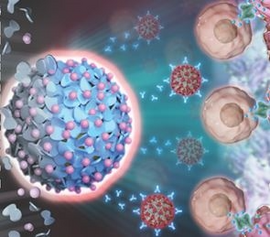The realm of biopharmaceuticals plays a crucial role in modern medical treatment, yet faces significant challenges. A notable concern is the brief half-life of many biopharmaceutical products, leading to swift degradation and clearance from the patient's body, necessitating frequent dosing. This article delves into the ways in which half-life extension strategies in drug development can effectively tackle this issue, enhancing patient convenience and optimizing therapeutic outcomes.
Biopharmaceuticals encompass a diverse array of drugs derived from endogenous peptides and proteins, spanning hormones, enzymes, growth factors, interferons, and antibodies. Despite their immense therapeutic potential, a common drawback is the short half-life of most therapeutic proteins, often lasting mere minutes to a few hours. This necessitates frequent administration, posing challenges for patients and potentially exacerbating symptoms if doses are missed. Extending the plasma half-life of these drugs holds the key to prolonging dosing intervals, easing patient burden, and elevating their overall quality of life, especially for those with chronic diseases requiring lifelong treatment.
Several strategies contribute to the extension of drug half-life in the realm of drug discovery and development. These include polymer conjugation, bioactive natural protein conjugation, carbohydrate modification, and sustained-release drug delivery systems.
Bioactive natural protein conjugation, gaining popularity due to reduced toxicity, includes well-established technologies such as albumin conjugation. This technique is widely employed in numerous protein drugs available in the market. The Fc-Fusion technology, applicable to various therapeutic proteins, has shown positive effects on half-life extension, therapeutic efficacy, and physical properties.
The Fc fusion strategy entails utilizing the Fc portion of immunoglobulin G (IgG) molecules to prolong the circulating time and bioavailability of biopharmaceutical products. Analytical tools are essential for characterizing these structurally complex and heterogeneous Fc fusion proteins, confirming primary structure, assessing post-translational modifications, and evaluating physicochemical attributes.
Sustained-release drug delivery systems aim to extend a drug's presence in the body by controlling its release rate. This is achieved through encapsulating the drug within carriers, such as particles, films, and gels. Nanoparticle-based systems and lipid-based systems play pivotal roles in modulating the pharmacokinetics and pharmacodynamics of therapeutic agents, gradually releasing the drug into circulation and protecting it from enzymatic hydrolysis.
By controlling drug release rates and leveraging the stability of the Fc portion, these innovative strategies offer promising avenues for extending drug half-life, enhancing therapeutic efficacy, and improving the overall drug administration experience for patients. These advancements mark significant progress in the biopharmaceutical field, providing patients with more durable, convenient, and effective treatment options for the future.

Enjoy being online again!
Welcome to the community of good people who base their values on evidence and appreciate civil discourse - the social network you will enjoy.Create your free account
Enjoy being online again!
Welcome to the community of good people who base their values on evidence and appreciate civil discourse - the social network you will enjoy.Create your free account







